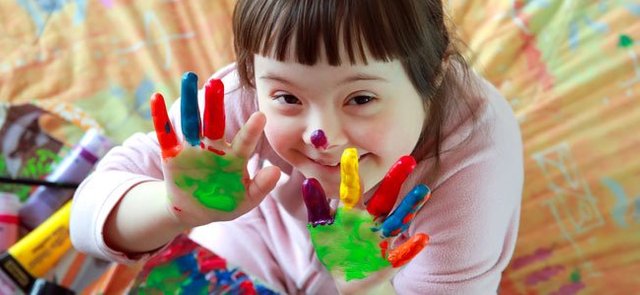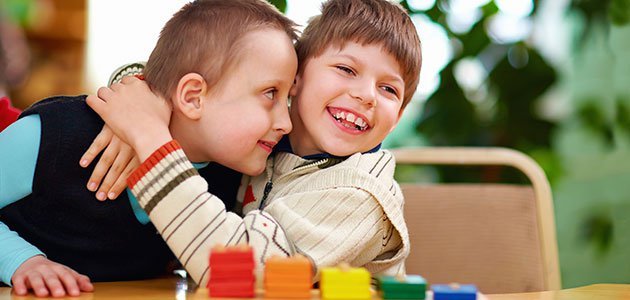Strategies to improve teaching in children with disabilities
Children with special needs often have problems learning concepts and acquiring skills in a traditional classroom environment. With a special place, children who must go to special education schools can achieve the same educational objectives as their non-disabled peers. Educators can promote special education learning strategies using the child's strengths and interests to help overcome the obstacles of learning in a general education classroom.
Learning disabilities are diseases that affect how a person learns to read, write, speak and calculate numbers. These disabilities are due to differences in brain structure and affect the way a person's brain processes information.
Some of the most common learning disabilities include:

source
Dyslexia. This disease causes problems with language skills, particularly reading. People with dyslexia may have difficulty spelling, understanding sentences and recognizing words they already know.
Dysgraphy. People with dysgraphia have problems with handwriting. They could have problems forming letters, writing within a defined space and putting their thoughts on paper.
Dyscalculia. People with this disability in learning mathematics may have difficulty understanding arithmetic concepts and doing tasks such as adding, multiplying and measuring.
Dyspraxia. This disease, also called sensory integration dysfunction, includes problems with motor coordination that lead to poor balance and clumsiness. Poor eye-hand coordination also causes difficulties with tasks that require fine motor skills, such as putting together puzzles and coloring inside the lines.
Apraxia of speech. Sometimes called verbal apraxia, this disorder includes problems speaking. People with this disorder have difficulty saying what they want in a correct and consistent way.
Central auditory processing disorder. People with this disease have trouble understanding and remembering tasks related to language. They have difficulty explaining things, understanding jokes and following directions. They confuse words and are easily distracted.
Disorders of non-verbal learning. People with these diseases have good verbal skills but great difficulties in understanding facial expressions and body language. In addition, they are physically clumsy and have difficulty generalizing and following directions with multiple steps.
Visual perceptual visual motor. deficit People with this disease mix the letters; they could confuse the m and the w or the d and the b, for example. They may also get lost when they are reading, copying incorrectly, writing in a disorderly manner and cutting paper clumsily.
Aphasia. Aphasia, also called dysphasia, is a language disorder. A person with this disorder has difficulty understanding spoken language, poor reading comprehension, difficulty in writing, and great difficulty in finding the words to express their thoughts and feelings. Aphasia occurs when the areas of the brain that take care of the brain are damaged. language. In adults, this is often due to a stroke, but children may have aphasia due to a tumor, injury or brain infection
It is important to bear in mind that they are children who need more attention from the teacher, teach parents the methods and strategies to use at home so that the teaching-learning process is not lost.

source
Educational examples: Providing children with special needs with examples in the area of study can help them establish a substantial self-concept and thus generate an increased learning motivation. Highlight the achievements of people with disabilities in math, science, literature or any other area of study and emphasize the fact that even individuals who have achieved significant things need to ask for help at times.
Ask questions: When introducing new concepts or material in a special education classroom, be sure to ask questions at the end of each important point to clarify any misunderstandings and evaluate how comfortable the student feels with the material. Provide structured sketches for daily activities, and discuss the program with them during the day to reinforce the importance of activities and help students stay focused on their duties.
Multiple modes of delivery: Presents the information in different ways to meet different learning styles. As in a normal education classroom, in a special education classroom, each student has his or her favorite form of learning, including visual, auditory and tactile education. Use more than one delivery mode to accommodate the learning styles of more students at the same time - write the information on the board and present it orally, or have students read the prompts and then practice a new skill on a given task . Using props and role plays are some learning strategies for tactile students.
Remember information: Teachers can help children with special needs improve their ability to remember concepts and information with different strategies. Teachers should review the information within 24 hours of teaching children of different abilities. Use classification methods to categorize data, use visual aids or assign colors to represent data. In addition, providing opportunities for students to use more than one sense in learning and reviewing information can also help special education students make use of their memory skills. Incorporating a physical activity and converting the exercises of review into games can also help children stay involved and remember the concepts.
Extended time: Most students with learning difficulties can complete the same jobs as normal education students in just a couple of extra minutes. Special education learning strategies should include the provision of additional minutes for students to learn the material to complete the activities in class, as well as give them tasks several days before the day before the date of delivery.
Individualized education plan: Learning strategies vary greatly among children with special needs, and their disabilities may require different conceptual, physical or behavioral locations. An individualized education plan IEP must stipulate flexible learning strategies that help the child achieve educational objectives according to the specific needs and capacities of the individual.
This are some great ideas, but one of the problems faced by most teachers for classes with special needs students is how to handle them in the midst of all the other students. Maybe you can talk about that?
Congratulations @julica7! You have completed some achievement on Steemit and have been rewarded with new badge(s) :
Click on any badge to view your own Board of Honor on SteemitBoard.
For more information about SteemitBoard, click here
If you no longer want to receive notifications, reply to this comment with the word
STOP